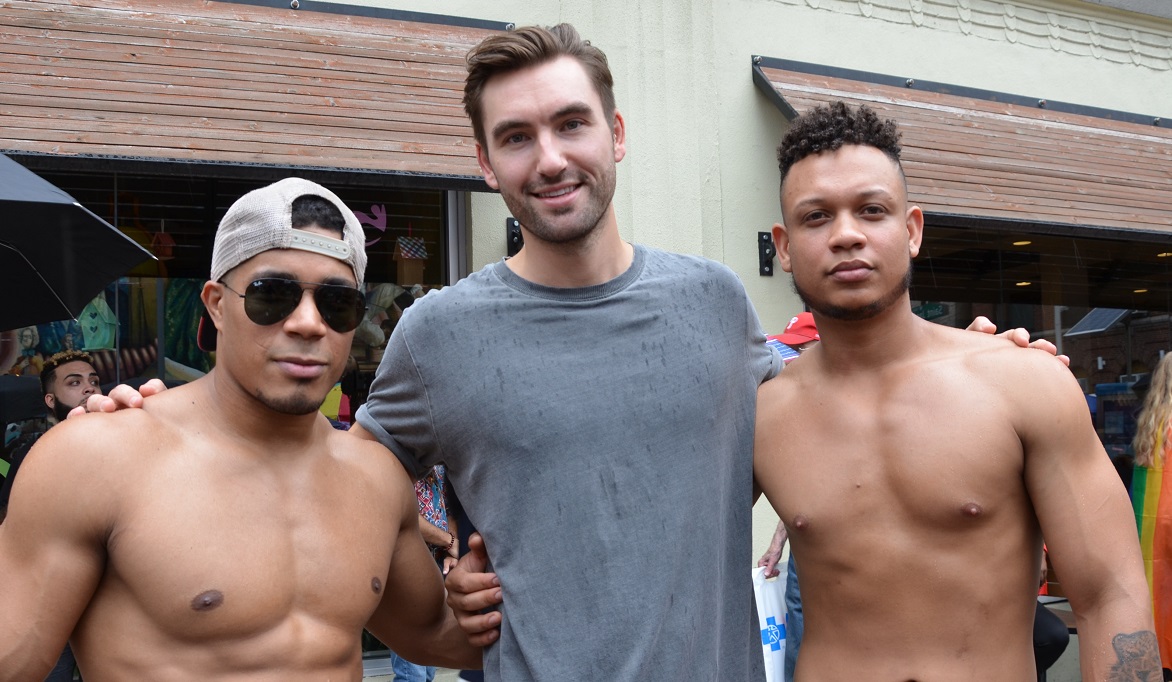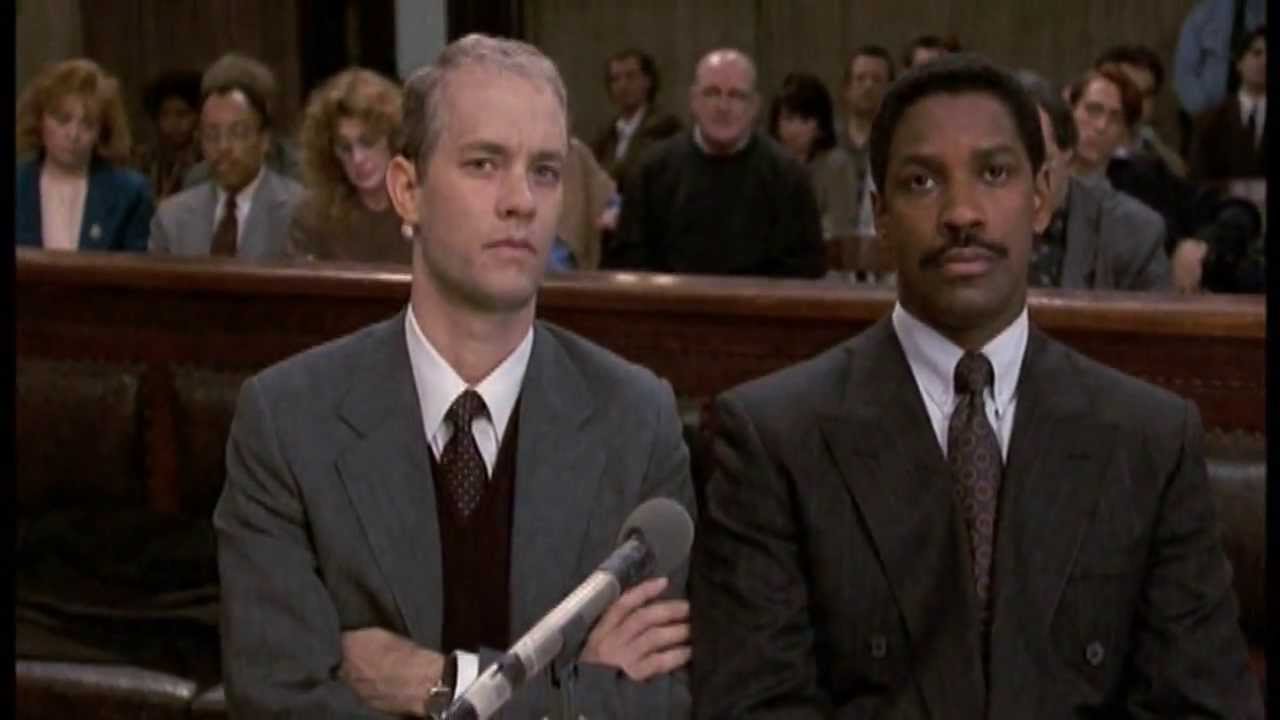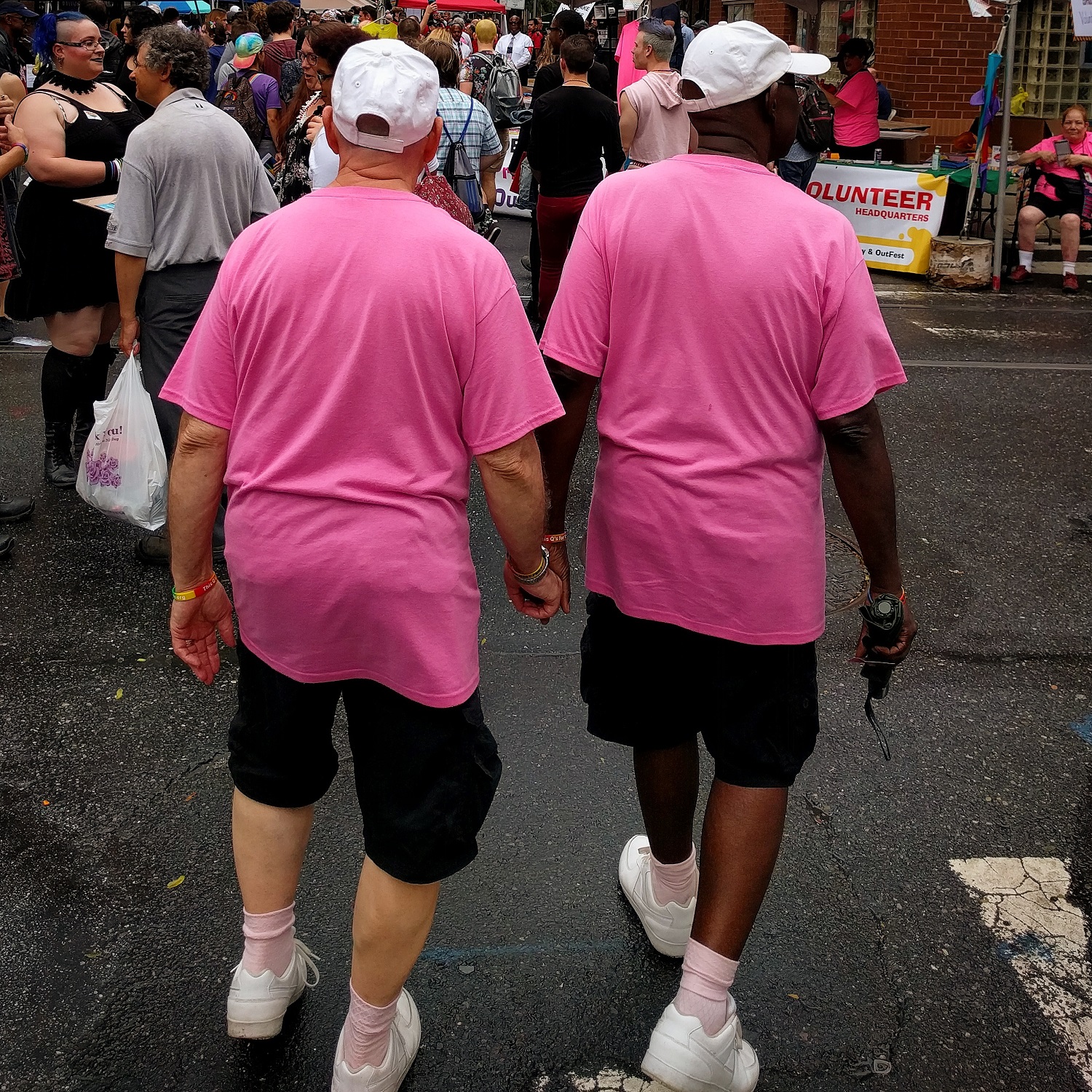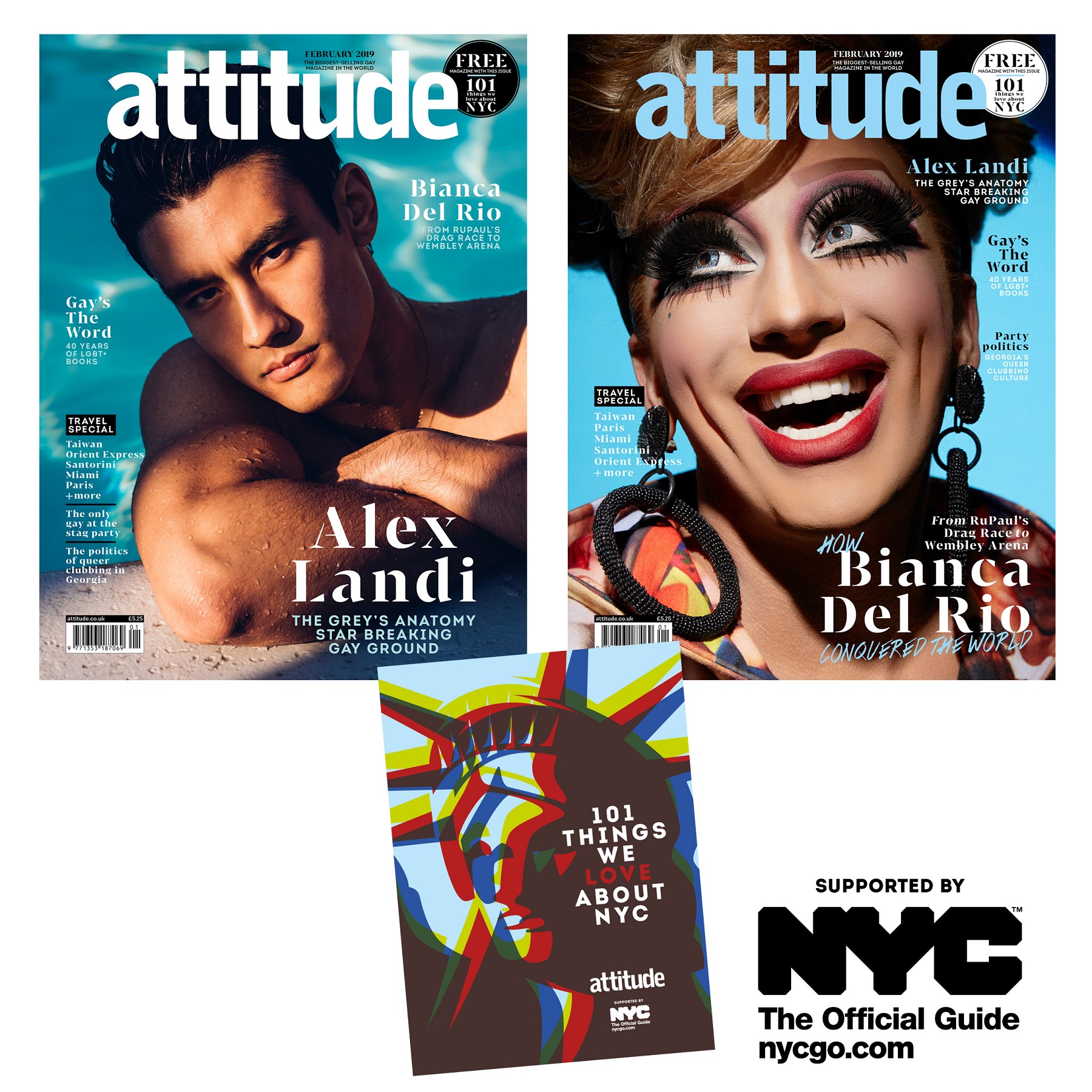Philadelphia is home to the best food, oodles of art and a ‘perfectly formed gay scene’
Adam Duxbury travels to the city just in time for the city's annual OutFest
By Steve Brown

This article first appeared in Attitude 297 summer issue.
On a Saturday evening in early October last year, I found myself admiring the view from the vertiginous R2L restaurant in downtown Philadelphia.
I was partly marvelling at the twinkling lights of the city’s knifestraight streets spreading out below, and partly crushing on my impossibly cool dining companion, Amber Hikes.
As the director of office of LGBT+ affairs, she serves as the mayor’s principal policy advisor on issues affecting the queer community, and she had joined our little press group to tell us a bit more about queer life in the city in the run up to Philly’s annual OutFest.
I’d arrived the day before, with just enough time to take an evening stroll around Rittenhouse Square, a cute little park close to our hotel, and have dinner at V Street, a brilliant vegan restaurant, where you can sit on a bar stool and look into the kitchen as you eat — which beats staring at your phone.
Before arriving, I have to admit that my knowledge of Philadelphia was pretty scant. I knew that the famous steps Sylvester Stallone runs up in the multi-Oscar-winning film Rocky were here somewhere, and vaguely remembered there were queer connections because I’d seen Tom Hanks’ Philadelphia (another Oscar success).

I’d also heard it referred to as “the city of brotherly love and sisterly affection.” But I wasn’t expecting to find such a walkable, picturesque, vibrant and diverse city.
During my four-night stay, I discovered some of the best food I’d eaten in the States, a perfectly formed gay scene and oodles of art and culture.
However, perhaps the biggest surprise was discovering that all this is a mere 75 minutes by train from New York City, making it a perfect day or weekend trip if you fancy escaping the Big Apple — not that Philadelphia isn’t deserving of a visit in its own right.
Back on the 37th floor restaurant, I was quickly bonding with Amber over another impossibly cool, queer woman of colour — Annalise Keating — the powerful but messed-up lawyer played by Viola Davis in the TV show How To Get Away With Murder.
The show is set in the city and basically served as my only other reference point. Earlier that morning our group had met up over breakfast with our guide for the trip, Irene Levy Baker.
Having recently written a book called ‘100 Things To Do in Philadelphia Before You Die’, unsurprisingly she was well-equipped to show us around and almost always had the answer to whatever random question we posed.

We set off for Philly’s “Gayborhood” where Irene had arranged for Bob Skiba, an archivist at the William Way LGBT Community Center and an expert guide on all things queer in the city, to join us.
Bob explained that the Gayborhood, a sizeable chunk of real estate bound by 11th and Broad Streets and Pine and Walnut Streets, and marked by 36 rainbow street signs, didn’t adopt its current name until the mid-to-late Nineties.
Before then it was known as the gay ghetto. Like many areas, including London’s Soho, it emerged out of the city’s red-light district. If you go back to the 1920s, this was where society folk would come for a fashionable night out, to hear the likes of Ella Fitzgerald, but by the 1950s, glitzy nightclubs had been replaced by cheap strip bars, drugs and prostitution.
“Back in the 1950s so many gay men were moving into the rows of red-brick apartments that Philadelphians, straight or gay, referred to them as the Spruce Street Boys,” Bob explained, referring to the street we were on, as he pointed out the remnants of the area’s long queer history.
He brought us to the stairwell of a secretive Prohibition-era pub whose fierce lesbian maître d’ would flash the lights before a raid so that all the gay and lesbian punters could quickly pair up and innocently dance as “straight” couples.
Bob was a brilliant source of local knowledge and it’s worth seeking him out via archives@waygay.org to organise your own tour. We’d be back in the Gayborhood several times over the weekend, so Irene whisked us off to the Benjamin Franklin Parkway, an area that’s home to most of the city’s great galleries, including The Barnes Foundation, The Franklin Institute, The Rodin Museum, The Ruth and Raymond G Perelman Building, and our next stop, The Philadelphia Museum of Art.
It was incredible to see so many masterpieces by artists such as Duchamp, Miró and Picasso on our whirlwind tour, but frustrating that we had to move quickly to stick to our schedule — you could easily spend days wandering around the museums here.
Those famous Rocky steps actually lead up to the museum, so we had to stop for a few pictures. I’m not a big enough Stallone fan to bother with the long queue to pose in front of his Rocky Balboa statue, however.
Next on the list, and equally impressive, was the Barnes Foundation. This gallery within a gallery is a faithful recreation of how Albert Barnes originally displayed his collection, now relocated more centrally and housed in a slick new gallery shell.
Barnes made his money in pharmaceuticals, and collected art for most of his life, starting in 1902. By the time he died in 1951, his collection included 69 works by Cézanne — more than in all Paris’ museums — 44 by Picasso, 60 by Matisse, and 181 Renoirs.
The collection now includes more than 900 works, worth about £18bn. His unique way of showcasing art was far from the stuffy pretension you often see in galleries.
He was passionate about educating the underprivileged so he dispensed with labels, periods and chronological order and instead hung paintings in pairs and groups, mixed in with furniture and metal hinges in whatever way he thought would be harmonious.
It’s unlike any gallery I’d visited before — in the best possible way. After dinner we were lucky enough to have been invited to the annual Fall Ball, hosted by The Philadelphia Gay Men’s Chorus.

It was a great way to meet up with some of the local guys and with a theme of the hit TV music show American Bandstand, we were thrown right into the middle of a fun night of pure Americana.
Later that night it was back to the Gayborhood where things looked very different because the bars were now lit up like beacons. We let our hair down in UBar, one of the city’s busiest spots and a great place for people watching.
Before jet lag (OK, too many gin and tonics) kicked in, we swung by The Bike Stop for a nightcap. This unassuming bar is fantastically unpretentious and attracts a mixed crowd ranging from cool, tattooed young musicians to silver haired biker daddies.
A slow start the following morning meant we were right on time for the start of OutFest. Spread over 10 blocks, this big fat queer street party attracts more than 40,000 visitors a year, who arrive to celebrate National Coming Out Day.
It had been unseasonably hot during our stay so even when the rain came down it didn’t dampen the mood of the crowd as we watched drag shows, played games and hit the bars, all of which had spilled out across the street.
And I couldn’t help but notice how truly diverse and welcoming the event was. Sure there were the routine white muscle boys in Speedos, but they were outnumbered by a wider range of people from across the queer spectrum, including families, people of colour and non-binary folk.
And I certainly felt the city’s brotherly love. As we strolled around the city, I also noticed lots of enormous murals covering the buildings. Returning to the area the next morning — with all signs of OutFest’s messy street party cleaned up — we took a street art tour to learn why Philadelphia’s other nickname is The City of Murals.
In 1984, in an effort to combat graffiti, a group of artists began painting large-scale murals, and they haven’t stopped since.
Now there are thousands spread across the city, mostly painted on parachute paper, which is applied a bit like wallpaper and then sealed over.

Many are made with the help of prisoners and homeless youth as part of an outreach programme, and a lot are by LGBT+ artists, including an enormous artwork right in the Gayborhood called Pride and Progress, depicting some of the city’s leading queer figures. One particular artist who is inexorably linked with the city is Isaiah Zagar.
His Picasso-esque mosaic works can be seen dotted all over but it all culminates in Magic Garden, a kind of psychedelic mosaic labyrinth made out of everything from kitchen tiles to bike wheels. Halloween is synonymous with American culture of course, and Philadelphia is no different.
Walking around, I could see that plenty of houses had already gone all out with their decorations so, in the spirit of (a very early) Halloween, we visited a Philadelphia institution: Terror Behind the Walls, at Eastern State Penitentiary.
This former prison once housed some of Pennsylvania’s worst criminals — including, at one stage, Al Capone, whose opulently decorated cell is the star attraction.
However, at this time of year the prison is all about scaring people witless as it transforms into an interactive haunted park that draws in visitors from all over the country. And for good reason, it’s bloody terrifying!
The next day there was time to see Independence Hall, where the Founding Fathers signed the Declaration of Independence, and the nearby famous Liberty Bell. We continued on to Fairmount Park, which snakes along the Schuylkill River.
It’s home to Boathouse Row: 10 charming clubhouses set on the serene banks of the river where competitive rowers train.
It’s a gorgeous view — and I don’t just mean the fit oarsmen. It was the perfect way to end my trip to Philly and although I’d managed to see some of the best things the city had to offer, I knew there was still plenty more to discover.
Overnight accommodation in a Standard King guestroom at The Warwick Hotel Rittenhouse Square costs from £156 ($199) per night (not including tax). For further details, visit www.warwickrittenhouse.com
For further details on the annual Outfest event, visit www.phillygaypride.org
For further details on year-round LGBT activities and events visit www.discoverphl.com/phldiversity/visit/LGBT/
For further details on Philadelphia, visit www.discoverPHL.com

In Attitude’s February Travel issue featuring Alex Landi and Bianca Del Rio on the cover – which is out now – we are also giving away a FREE 68-page travel guide 101 Things We Love About New York City, supported by nycgo.com (available with both print and digital editions).
Buy the February issue of Attitude now and take advantage of our best-ever subscription offers: 3 issues for £3 in print, 13 issues for £19.99 to download to any device.

